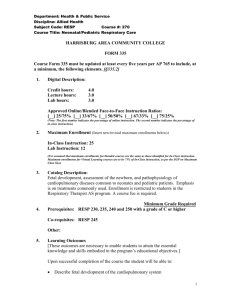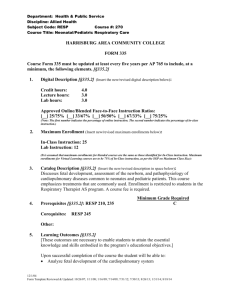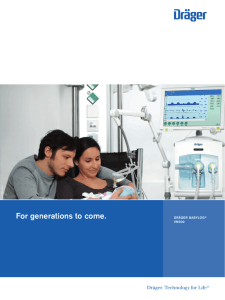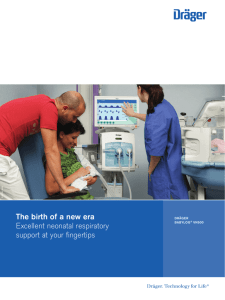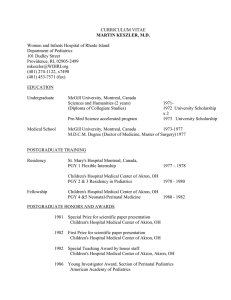RC 215 - Mohawk Valley Community College
advertisement
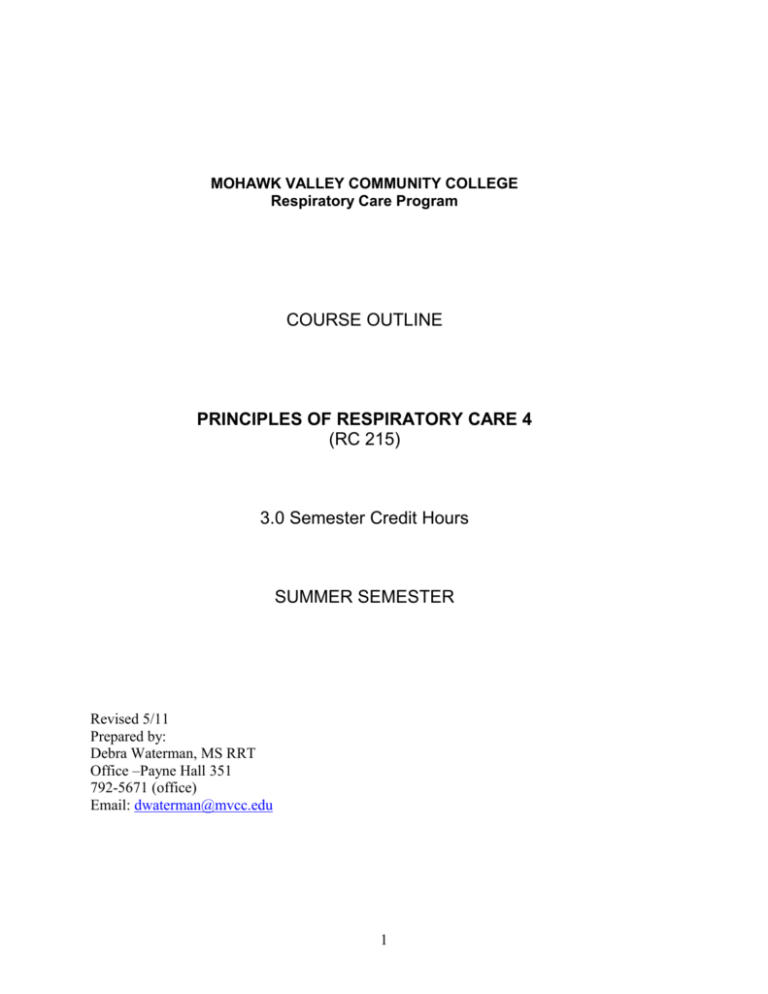
MOHAWK VALLEY COMMUNITY COLLEGE Respiratory Care Program COURSE OUTLINE PRINCIPLES OF RESPIRATORY CARE 4 (RC 215) 3.0 Semester Credit Hours SUMMER SEMESTER Revised 5/11 Prepared by: Debra Waterman, MS RRT Office –Payne Hall 351 792-5671 (office) Email: dwaterman@mvcc.edu 1 Course Title: PRINCIPLES OF RESPIRATORY CARE 4 Course Numbers: RC215 C-3, P-3, Cr-3.0 Course Description: This is the fourth course in the curriculum sequence to study the theory and practice of respiratory care. This concentrated five-day offering presents topics related exclusively to neonatal and pediatric respiratory care. Content areas include neonatal/pediatric diseases, pharmacology, airway management, mechanical ventilation, high frequency oscillation (HFO), and extracorporeal membrane oxygenation (ECMO). Students also complete the requirements for American Heart Association (AHA) Pediatric Advanced Life Support (PALS). Pre-requisites: Prior to taking RC215 the student must complete the following courses or their equivalents with a grade of “C” or better: RC233 Clinical Practicum 3 and RC213 Principles of Respiratory Care 3. Co-requisite: RC234 Clinical Practicum 4 or consent of the Program Coordinator. Course Student Learning Outcomes: 1. Review and interpret existing data in the medical record including: maternal history and data, perinatal history and data, APGAR scores, gestational age, L/S ratio and other studies of lung maturity. 2. Assess the neonate to determine gestational age, general appearance, APGAR score, peripheral edema, cyanosis, chest configuration, breathing pattern, asymmetrical chest movement, intercostal and/or sternal retractions, nasal flaring, capillary refill, presence of adventitious breath sounds. 3. Participate in the development of the respiratory care plan. 4. Appropriately recommend insertion of an umbilical monitoring line, chest tube(s) , and/or transcutaneous O2/CO2 monitoring. 5. Interpret results of umbilical monitoring and recommend changes in the patient care plan as appropriate. 6. Set-up transcutaneous O2/CO2 monitors, troubleshoot problems as they occur, correctly evaluate results and recommend changes in the patient care plan as appropriate. 7. Recommend, perform and interpret results from arterial and capillary blood sampling. 8. Recommend the use of pharmacologic agents where appropriate (respiratory stimulants, antiviral agents (ribovirin), sedatives/analgesics/muscle relaxants, artificial surfactants, bronchodilators). 9. Describe indications, process and hazards/complications of surfactant replacement therapy. 10. Discuss general indications for neonatal mechanical ventilation. 11. Discuss complications/hazards of mechanical ventilation. 2 12. Discuss various modes of ventilation used in the neonatal population and discuss indications, contraindications and hazards for each (CPAP, IMV, SIMV, A/C, jet ventilation, high frequency oscillation, inverse ratio ventilation). 13. Discuss the concept of compressed volume in the ventilator circuitry and explain it’s importance in neonatal ventilation. 14. Recommend changing the type of ventilator to be used on a neonatal patient as appropriate. 15. Discuss ventilator parameters/techniques used to treat IRDS, PPHN, BPD and other major neonatal problems/illnesses. 16. Recommend and perform weaning from mechanical ventilation. 18. Discuss indications, complications/hazards and process of extracorporeal life support. 19. Discuss indications, hazards/complications of nitirc oxide therapy in neonates. Schedule of Lecture and Laboratory Topics: The High Risk Infant Pediatric Respiratory Equipment Neonatal and Pediatric Diseases Managing the Critically Ill Infant Life Support Systems and Adjuncts In The NICU and PICU Neonatal Resuscitation Protocol Pediatric Advanced Life Support 3


